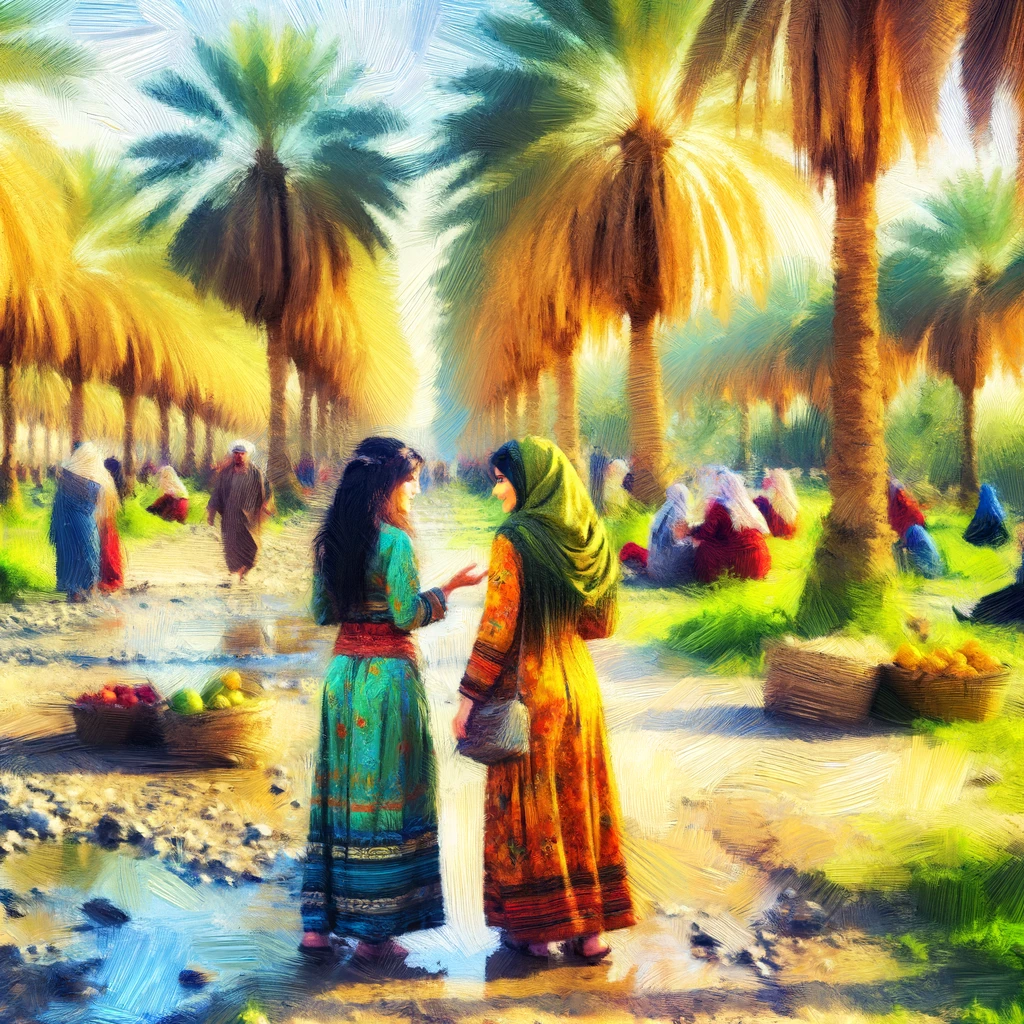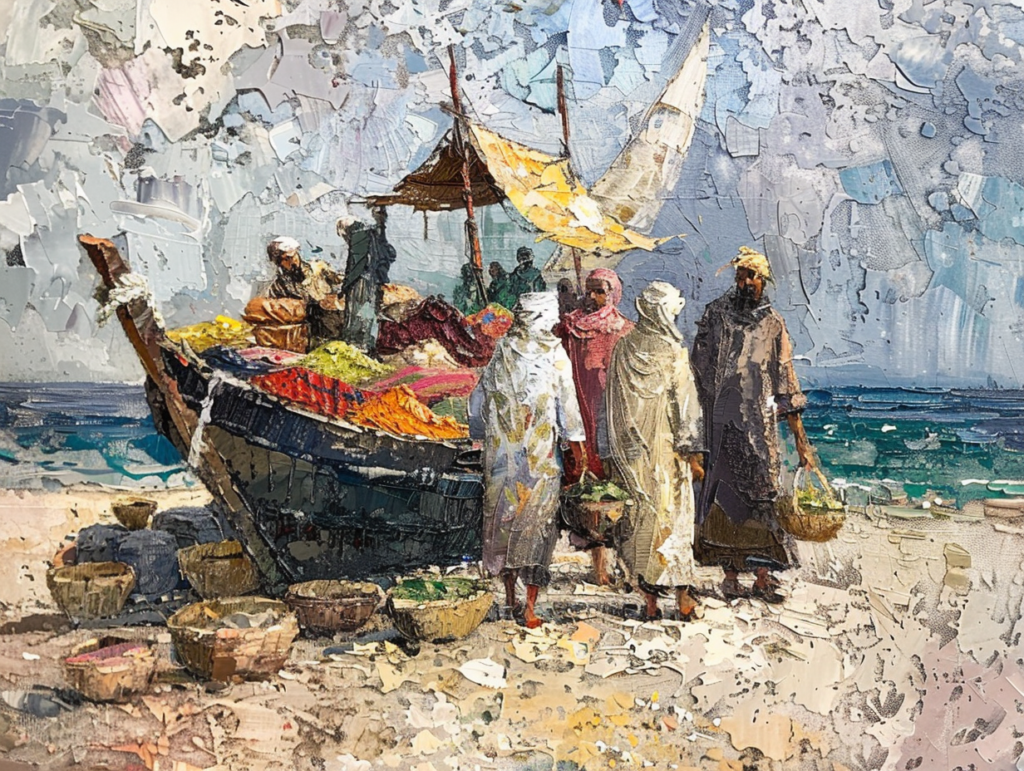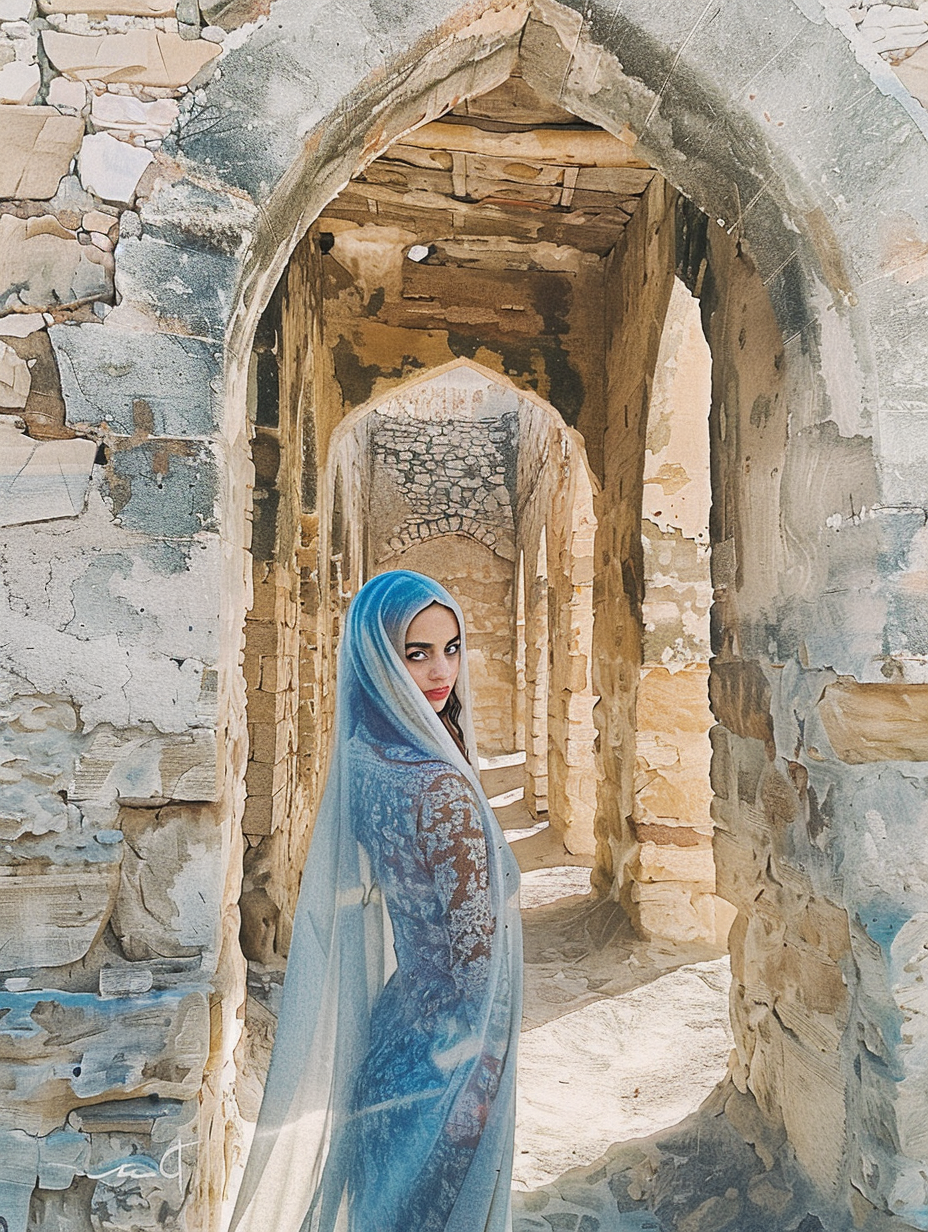Bahrain, a small island nation in the Persian Gulf, has a rich tapestry of history that predates the advent of Islam by millennia. Its strategic geographical location served as a crossroads for ancient trade routes, linking the great civilizations of Mesopotamia with the distant cultures of the Indus Valley. This essay delves into the pre-Islamic history of Bahrain, uncovering the layers of its past from the earliest human settlements to the eve of Islam. Key periods such as the Dilmun, Tylos, and Awal eras will be explored, alongside the significant influence of neighbouring empires like the Assyrians, Babylonians, Persians, and the Hellenistic cultures under the Seleucid Empire. Through an examination of Bahrain’s geographical significance, its role as a trade hub, and its cultural and socio-economic developments, this essay aims to provide anoverview of the island’s rich heritage before the Islamic era.
- Bahrain’s strategic geographical location in the Persian Gulf made it a crucial trade hub.
- The Dilmun civilization is one of the earliest and most significant cultures in Bahrain’s history.
- Bahrain was renowned for its pearl diving industry and the cultivation of date palms.
- The influence of neighbouring empires, including Assyrians, Babylonians, and Persians, shaped Bahrain’s cultural and political landscape.
- The Tylos and Awal periods saw the integration of Hellenistic and Sassanian cultural influences into Bahrain.
- Socio-economic structures in Bahrain were advanced, with a strong emphasis on trade, agriculture, and craft industries.
- Cultural and religious practices before Islam were diverse, reflecting the island’s rich tapestry of influences.
Bahrain’s Strategic Position in the Persian Gulf
Bahrain’s prominence in ancient times can largely be attributed to its strategic position in the Persian Gulf. Situated along vital maritime routes, it served as a crucial nexus for trade and cultural exchange between the civilizations of Mesopotamia to the west and the Indus Valley to the east. This pivotal location not only facilitated Bahrain’s development into a thriving trade hub but also influenced its political and cultural interactions with other regions.
Natural Resources: Pearls and Palm Trees
The island’s economy and trade were significantly bolstered by its natural resources, most notably pearls and palm trees. Bahrain was renowned for its pearl diving industry, which attracted traders from across the ancient world. These pearls, celebrated for their quality and beauty, were a major commodity in the trade networks of the time. Additionally, the cultivation of date palms played a crucial role in the local economy, providing food, shade, and materials for building and handicrafts. The abundance of these resources underpinned the economic stability and growth of Bahrain’s ancient communities.

The Role of Bahrain’s Environment in Early Human Settlement
The environmental features of Bahrain, including its fertile lands and the presence of freshwater springs, were conducive to early human settlement and development. These natural advantages enabled the island to support a sedentary population engaged in agriculture, fishing, and trade from a very early period. The archaeological evidence of ancient settlements and agricultural practices highlights the ways in which the inhabitants adapted to and utilised their environment, laying the foundations for the complex societies that would emerge in Bahrain over the centuries.
Archaeological Evidence of Early Human Activity
Bahrain’s history of human habitation stretches back thousands of years, as evidenced by archaeological findings across the island. Excavations have uncovered tools, pottery, and other artefacts dating back to the early Dilmun period (around the 4th millennium BCE), indicating a sophisticated level of societal development. These artefacts provide insights into the daily lives, trade, and agricultural practices of Bahrain’s ancient inhabitants.
The Dilmun Civilization
One of the most significant chapters in Bahrain’s pre-Islamic history is the era of the Dilmun civilization. Mentioned in Sumerian texts as a land of immortality and prosperity, Dilmun is recognised for its pivotal role as a trade intermediary between Mesopotamia and the Indus Valley. The strategic location of Bahrain allowed Dilmun to flourish as a trading hub, facilitating the exchange of goods such as copper, ceramics, and textiles. The archaeological sites, including the Barbar Temple, bear testimony to Dilmun’s advanced urban planning, architectural achievements, and religious practices.
Importance as a Trade Hub and Connections with Mesopotamian Civilizations
The importance of Bahrain as a trade hub during the Dilmun period cannot be overstated. Its position facilitated not only the flow of goods but also the exchange of cultural and technological innovations between ancient civilizations. The trade networks established by Dilmun connected it with major centres of power and culture in Mesopotamia, such as Ur and Babylon, allowing for the exchange of goods, ideas, and religious beliefs. This cross-cultural interaction enriched Bahrain’s cultural landscape, laying the groundwork for its diverse and multifaceted heritage.
The Dilmun Period
The Dilmun civilization, thriving from around the 4th millennium BCE, represents a golden era in Bahrain’s pre-Islamic history. This period is characterised by significant advancements in urban development, trade, and social organisation. Dilmun’s capital, thought to be located near present-day Manama, was a bustling metropolis with advanced architectural structures, including temples, public buildings, and residential areas. The city’s layout and infrastructure suggest a highly organised society with a keen understanding of urban planning and administration.
Role of Bahrain in Ancient Trade Networks
Dilmun’s strategic location in the Persian Gulf positioned it as a central player in the ancient trade networks. It acted as a crucial intermediary, facilitating the trade of goods such as pearls, precious metals, and textiles between the civilizations of the Indus Valley and Mesopotamia. The abundance of seals and written records found in archaeological sites across Bahrain attest to the island’s role in these extensive trade networks. These artefacts not only highlight Bahrain’s economic importance but also its diplomatic and cultural interactions with other regions.
Religious and Burial Practices
The religious and burial practices of the Dilmun civilization offer profound insights into the spiritual and cultural life of its people. The Barbar Temple, an archaeological site of great significance, is believed to have been dedicated to Enki, the Sumerian god of water and creation, reflecting the syncretic religious beliefs that characterised Dilmun society. Additionally, the thousands of ancient burial mounds scattered across Bahrain are a testament to the civilization’s complex social hierarchy and beliefs about the afterlife. These burial sites, varying in size and construction complexity, indicate a society with distinct social classes and a deep reverence for the deceased.

Influence of Neighboring Empires
The landscape of Bahrain’s history was significantly shaped by the influence of neighbouring empires such as the Assyrians, Babylonians, and Persians. Each of these powers left their mark on the island, not just politically but also culturally and economically. The Assyrian Empire, known for its military prowess and administrative skills, introduced new methods of governance and control. The Babylonian influence, on the other hand, is evident in the religious and cultural exchanges that took place, with Bahrain becoming a melting pot of Mesopotamian and local traditions. The Persian period brought with it administrative reforms and infrastructure developments, further integrating Bahrain into the broader Persian Empire.
Transition to the Tylos and Awal Periods
Following the Dilmun civilization, Bahrain entered the Tylos and later Awal periods. The Tylos era saw the island come under the influence of the Hellenistic world, especially during the time of the Seleucid Empire. This period marked a significant shift in cultural influences, with Greek architectural styles, language, and customs permeating Bahraini society. The subsequent Awal period, named after the ancient term for Bahrain, was characterised by the island’s integration into the Sassanian Empire. This era saw a continuation of the cultural and economic developments from the Tylos period but with increased Persian influence, particularly in the domains of art, religion, and governance.
Impact of Hellenistic Culture and Control by Parthian and Sassanian Empires
The Hellenistic influence on Bahrain, stemming from the Seleucid Empire’s control, introduced new artistic and architectural norms to the island. The fusion of Greek and local architectural styles can be seen in the remains of buildings from this period. The subsequent control of Bahrain by the Parthian and Sassanian empires further enriched the cultural tapestry of the island. The Sassanian period, in particular, was marked by significant architectural and artistic achievements, including the development of distinctive pottery styles and the construction of elaborate urban centres. These periods of foreign dominance were instrumental in shaping the cultural and social landscape of Bahrain, leading up to the Islamic era.
Socio-Economic and Cultural Developments
The socio-economic structures of Bahrain’s pre-Islamic societies were complex and multifaceted, reflecting the island’s status as a significant trade hub. The economy was underpinned by a combination of agriculture, trade, and craft industries. Agricultural practices were advanced, with the cultivation of dates and other crops supported by an intricate system of irrigation. Trade was the backbone of the economy, with Bahrain’s strategic location facilitating the exchange of goods across vast networks. Artisanal crafts, particularly pottery and metalwork, were highly developed, catering not only to local needs but also to demands in foreign markets.
Role of Trade, Agriculture, and Craft Industries
Trade played a pivotal role in the economic prosperity of Bahrain, with the island acting as a crucial link between the civilizations of the East and West. Agriculture, too, was a cornerstone of the economy, with the fertile lands of Bahrain yielding an abundance of crops that sustained the local population and contributed to trade. The craft industries, including the famed pearl diving and metalworking, were integral to Bahrain’s economic fabric, providing goods for both local use and international trade. These industries, supported by a skilled workforce, underscored the economic diversity and sophistication of Bahrain’s pre-Islamic societies.

Cultural and Religious Practices Before Islam
The cultural and religious landscape of Bahrain before the advent of Islam was rich and diverse, influenced by the myriad cultures and civilizations that interacted with the island. Religious practices were syncretic, blending elements from Mesopotamian, Persian, and Hellenistic traditions. This amalgamation of beliefs is evident in the archaeological remains of temples and religious artefacts found throughout Bahrain. Cultural practices, too, were diverse, with art, literature, and architecture drawing from a wide range of influences. The presence of Hellenistic art styles, Persian architectural elements, and Mesopotamian literary motifs in Bahraini culture underscores the deep cross-cultural exchanges that took place in the island’s pre-Islamic period.
Bahrain on the Eve of Islam
On the eve of Islam, Bahrain found itself at a crossroads of cultural, religious, and political influences. The island was a mosaic of beliefs and practices, with remnants of ancient Dilmun beliefs, alongside influences from Mesopotamia, Persia, and the Hellenistic world. The society was stratified, with a clear distinction between the ruling classes, traders, craftspeople, and agricultural workers. Politically, Bahrain was under the influence of the Sassanian Empire, which exerted control over the region, integrating it into its administrative and economic systems. This period was marked by significant change, as the region stood on the brink of the transformative wave of Islam that would soon sweep across the Arabian Peninsula.
Brief Overview of the Conversion to Islam and Its Initial Impact
The conversion to Islam in Bahrain occurred peacefully, largely through the efforts of the Prophet Muhammad’s envoy, Al-Ala’a Al-Hadhrami. This transition marked a significant turning point in Bahrain’s history, ushering in a new era of religious, social, and political change. The adoption of Islam led to the reorganisation of society around the new faith, impacting legal systems, trade practices, and social norms. Despite these changes, the essence of Bahrain’s diverse cultural heritage remained, with the Islamic period absorbing and reinterpreting the rich tapestry of the island’s pre-Islamic past.
From the early settlements and the flourishing Dilmun civilization to the influences of major empires and the transition into the Islamic era, Bahrain’s history is a testament to its significance as a cultural and economic hub in the ancient world. The synthesis of various cultural and religious influences over the millennia has shaped Bahrain into a unique mosaic of traditions and beliefs.
As we reflect on Bahrain’s journey through time, it becomes evident that the island has always been a place of convergence, where different cultures, economies, and ideas intersect, creating a rich legacy that continues to resonate today.
FAQ
Q: What was the significance of Bahrain’s location in ancient times?
A: Bahrain’s location made it a vital trade link between Mesopotamia and the Indus Valley.
Q: What are the Dilmun civilization’s notable contributions to Bahrain’s history?
A: Dilmun is known for its trade networks and religious practices.
Q: What natural resources contributed to Bahrain’s economy before Islam?
A: Pearls and date palms were key to Bahrain’s economy.
Q: How did neighbouring empires influence Bahrain?
A: They introduced new governance, cultural exchanges, and economic practices.
Q: What marks the Tylos and Awal periods in Bahrain’s history?
A: These periods are marked by Hellenistic and Sassanian influences.
Q: How did trade impact Bahrain’s socio-economic development?
A: Trade was central to Bahrain’s prosperity, facilitating cultural and economic exchanges.
Q: What were the religious practices in Bahrain before Islam?
A: They were syncretic, blending Mesopotamian, Persian, and Hellenistic elements.
Q: How did Bahrain convert to Islam?
A: The conversion was peaceful, led by the Prophet Muhammad’s envoy.

